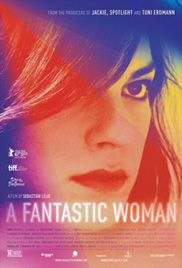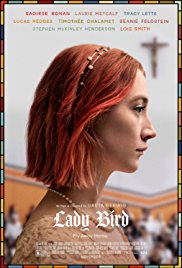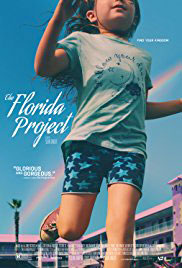
Over the last few years I am noticing what seems like a trend or at least a drift toward minimalism and a focus on inner conflict. More and more well-regarded films are being told in just one act.
Conventional full-length three-, four-, five- or more act films dynamically progress their conflicts around major turning points to an all-or-nothing climax. A one-act telling, on the other hand, accumulates pressure gradually, often exclusively within the protagonist’s psychological and emotional life, and usually ends on a quiet release. If a story spans only one movement with no major turnings, it usually asks its audience for less than 30 minutes of performance time: short stories, short films, one-act plays.
Feature films run around 100+ minutes. If a writer wants to tell a full-length work in only one act, the first problem is how to hook and hold interest for up to two hours while the film paints a portrait of silent inner conflict? Deep psychological change takes time, often years, even decades. When that’s the heart of the telling, major outer events that happen along the way may seem irrelevant, even melodramatic.
Recent one-act films that pulled this off with success: WILD (2014)—a woman in recovery; 45 YEARS (2015)—a woman in despair; PATTERSON (2016)—a poet adrift.
Stories of inner conflict build around a life dilemma and end on the protagonist’s choice to change her mind in one direction or the other. For that reason, they cause a second problem: risk. No story is worth telling until you answer these critical questions: What’s at stake? What’s the risk? What does the protagonist stand to lose if she doesn’t get what she wants? And if a change of mind climaxes the story, what’s to stop the protagonist from changing it back again? Can a true ending be so easily reversed?
The three previous examples work beautifully because what’s at stake feels weighty and the end change seems irreversible. In WILD, we feel that she’s off of drugs forever. In 45 YEARS, a wife discovers that her husband has always loved another woman more than her throughout nearly a half-century of marriage. Her realization makes her life meaningless, and nothing will ever change her mind. In PATTERSON, a poet loses his only copy of a lifetime of writing, but then gathers himself and decides to begin again. We feel that he will keep at it no matter what.
Given the inherent problems dramatizing inner conflict, how is the writer to hold an audience’s involvement over time? One possible answer: substitute discovery for suspense.
Three-act tellings offer the pleasure of suspense, defined as an empathetic curiosity about outcome, powered by major jeopardies and risks at stake in the protagonist’s life.
Full-length one-acts offer the pleasure of discovery, defined as the seeing, hearing, and vicarious living in a fascinating world filled with people, things, and more you’ve never known before. These fresh encounters pull the audience through the telling because each one delivers a new pleasure. Like picking up beautiful stones on a beach, we want more and more. Therefore, one effective way to hold and build interest for nearly two hours without a compelling plot twists is to create fascinating, utterly original, vivid details.
Below are four one-acts from 2017. I’ve broken them into five key elements: Inciting incident, object of desire, storyline, details and risk. Notice that in three of them the inciting incident is in the deep backstory—the bad luck of being born poor. Notice also that the protagonists are all female (as were two of the three above). And except for the last, the endings are rather soft and possibly reversible without great consequence. Note also that it’s the details that hook and hold interest.

A FANTASTIC WOMAN
Inciting Incident: A transsexual’s lover dies.
Object of Desire: To shed tears of grief over her lover’s corpse.
Storyline: Repeated indignities suffered by a transsexual.
Details: Various passive/aggressive tactics used by the police and her dead lover’s family to humiliate her.
What’s at risk? What’s the worst thing that could happen if she doesn’t achieve her object of desire?
Answer: She will cry at home alone, and then go on with her life.

A FANTASTIC WOMAN
Inciting Incident: A transsexual’s lover dies.
Object of Desire: To shed tears of grief over her lover’s corpse.
Storyline: Repeated indignities suffered by a transsexual.
Details: Various passive/aggressive tactics used by the police and her dead lover’s family to humiliate her.
What’s at risk? What’s the worst thing that could happen if she doesn’t achieve her object of desire?
Answer: She will cry at home alone, and then go on with her life.

LADY BIRD
Inciting Incident: Her birth to financially and emotionally damaged parents, followed by a childhood of dissatisfaction in a do-nothing town.
Object of Desire: To escape her mother’s domination and find her true identity at a big city university.
Storyline: Crosscut scenes of a teenager’s struggles with a lying lover, demanding mother, and out-of-reach college.
Details: The tactics she uses to give herself prestige are delightful: a new name, a phony address, and verbal putdowns of her mother.
What’s the worst thing that could happen if she doesn’t achieve her object of desire?
Answer: She will go to a local college.

LADY BIRD
Inciting Incident: Her birth to financially and emotionally damaged parents, followed by a childhood of dissatisfaction in a do-nothing town.
Object of Desire: To escape her mother’s domination and find her true identity at a big city university.
Storyline: Crosscut scenes of a teenager’s struggles with a lying lover, demanding mother, and out-of-reach college.
Details: The tactics she uses to give herself prestige are delightful: a new name, a phony address, and verbal putdowns of her mother.
What’s the worst thing that could happen if she doesn’t achieve her object of desire?
Answer: She will go to a local college.

COLUMBUS
Inciting Incident: Her birth to a drug addicted mother, followed by a childhood of dissatisfaction.
Object of Desire: Escape from her needy mother and entrance into college to study architecture.
Storyline: Numerous intelligent discussions about art that in the subtext express her quiet aspiration for a meaningful life.
Details: The silent beauties and varieties of modernist architecture found in an unlikely place: Columbus, Indiana.
What’s the worst thing that could happen to if she doesn’t achieve her object of desire?
Answer: She goes to college next year or the year after or never.

COLUMBUS
Inciting Incident: Her birth to a drug addicted mother, followed by a childhood of dissatisfaction.
Object of Desire: Escape from her needy mother and entrance into college to study architecture.
Storyline: Numerous intelligent discussions about art that in the subtext express her quiet aspiration for a meaningful life.
Details: The silent beauties and varieties of modernist architecture found in an unlikely place: Columbus, Indiana.
What’s the worst thing that could happen to if she doesn’t achieve her object of desire?
Answer: She goes to college next year or the year after or never.

THE FLORIDA PROJECT
Inciting Incident: Her birth to a backstreet prostitute.
Object of Desire: To stay with her mother while she plays with her friends.
Storyline: A little girl fills her days with imaginative play while her mother hustles to pay the rent.
Details: The myriad ways she makes something out of nothing: the fun and adventure she creates while playing in a crumbling motel and the shrub lands that surround it.
What’s at stake?
Answer: In time she could become a prostitute like her mother and use drugs to kill her humiliation.
What’s the worst thing that could happen if the police arrest her mother?
Answer: In a satisfying ironic twist, she would be adopted by surrogate parents and given a chance in life.

THE FLORIDA PROJECT
Inciting Incident: Her birth to a backstreet prostitute.
Object of Desire: To stay with her mother while she plays with her friends.
Storyline: A little girl fills her days with imaginative play while her mother hustles to pay the rent.
Details: The myriad ways she makes something out of nothing: the fun and adventure she creates while playing in a crumbling motel and the shrub lands that surround it.
What’s at stake?
Answer: In time she could become a prostitute like her mother and use drugs to kill her humiliation.
What’s the worst thing that could happen if the police arrest her mother?
Answer: In a satisfying ironic twist, she would be adopted by surrogate parents and given a chance in life.
Of the four films, THE FLORIDA PROJECT is my favorite. What makes it hook and hold is writer-director Sean Baker’s unique renderings of the spirit, tricks and fantasies of childhood play—all brought to life by a brilliant seven-year-old actor: Brooklynn Prince. We’ll see more of her genius in the future. Of that I’m sure.